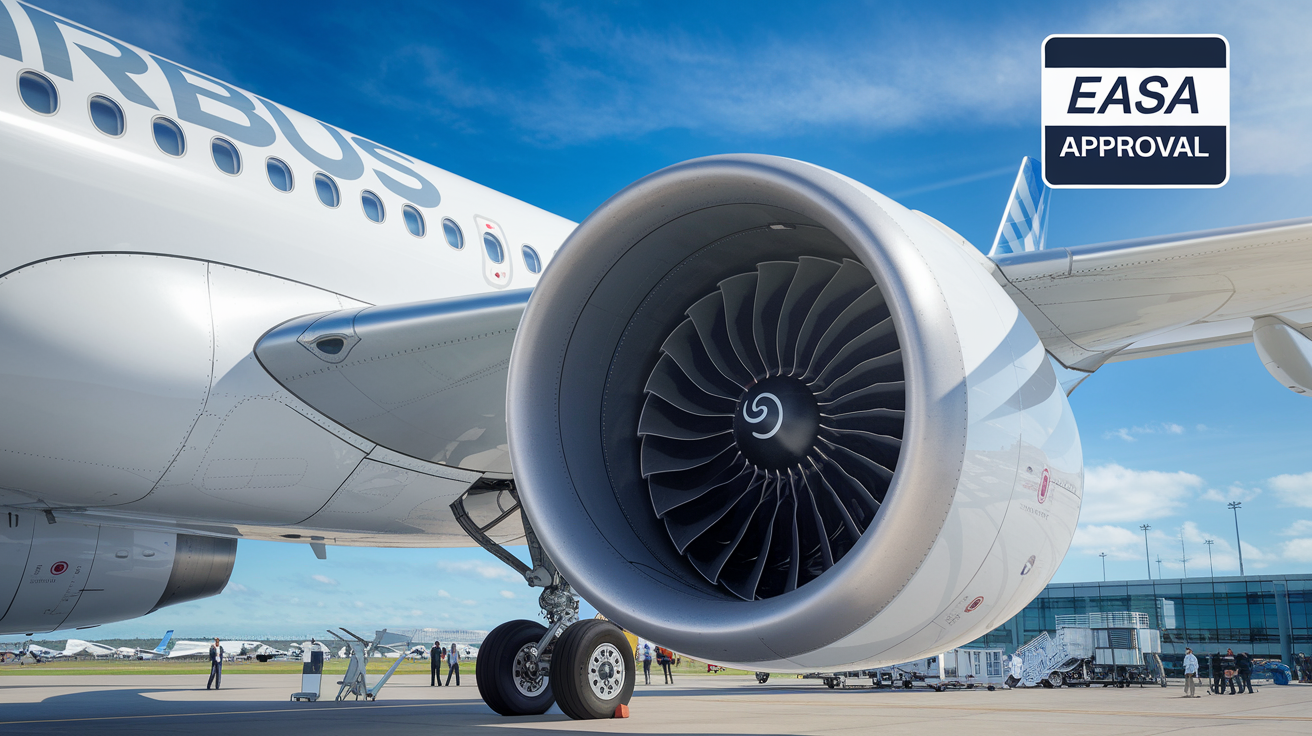The turbofan GTF from Pratt & Whitney recently received the covetedEuropean Aviation Safety Agency (EASA) to equip theAirbus A321XLR. This innovative engine stands out for its remarkable energy efficiency and low carbon emissions, meeting the contemporary requirements of the world's airlines. Offered with the Leap-1A from CFM Internationaloffers operators an eco-responsible alternative for their long-haul flights. This breakthrough positions the GTF as a strategic choice for new-generation single-aisle aircraft.
Europe's air corridors are about to vibrate to the gentle purr of the GTF engine from Pratt & Whitney. The European Aviation Safety Agency (EASA) recently delivered the long-awaited certification, enabling this jewel of technology to adorn the impressive wing of the Airbus A321XLR.
Pratt & Whitney and energy efficiency at the heart of innovation
The engines GTF from Pratt & Whitney are distinguished by exceptional fuel efficiency. Their advanced design guarantees up to 20 % more fuel savings than previous generations, helping to reduce the airline industry's carbon footprint. Since entering service in 2016, these engines have already saved around 2 billion gallons of fuel and reduced CO2 of 20 million metric tons.
Strategic airline choices
Numerous airlines have expressed interest in the Airbus A321XLR, not only for its ability to handle long-haul narrow-body flights, but also for the engine options it offers. IAGfor example, has opted for the Leap from CFM Internationalwhile others lean towards the GTF from Pratt & Whitney. This diversity allows companies to choose according to their energy optimization strategies.
Joint certification by EASA and FAA
The recent certification ofEASA for the GTF engine to that already obtained from the Federal Aviation Administration (FAA) in the United States. This agreement strengthens major international customers in the durability and safety of the Pratt & Whitney GTF.
Looking to the future of long-haul flights
The Airbus A321XLR, with its ability to reach far-flung destinations non-stop, is proving to be a popular choice for companies serving long-haul routes. With motorization GTFIn addition to lower costs, operators also benefit from a lighter environmental impact, in line with the aeronautical industry's growing concern to reduce its ecological footprint.
The success of the GTF on the market testifies to the dynamism and Pratt & Whitney's continuous innovation, proving that it is possible to combine cutting-edge performance with respect for the environment, a mantra that has become crucial for travelers and airlines alike.

Pratt & Whitney GTF Engine Certification Comparison
| Features | Description |
| Aircraft model | Airbus A321XLR |
| Motor type | Double flow |
| Certification Organization | EASA (European Aviation Safety Agency) |
| Certification date | December 2025 |
| Energy Efficiency | Up to 20% in fuel savings |
| Emissions reduction | Low carbon emissions |
| Customers | 13 airlines choose this model |
| Competitors | CFM with LEAP-1A model |
| Environmental impact | 2 billion gallons of fuel saved |
| Usage | Long-range single-aisle aircraft |




